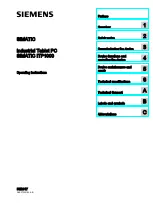
La Crosse Technology, Ltd.
Page 2
BATTERIES
•
Half of all warranty issues can be resolved with fresh batteries of the appropriate voltage.
•
We suggest name brand alkaline batteries.
•
Use batteries dated at least six years in advance of the current year. Batteries dated earlier than six
years from now may still work, but may be unstable in performance.
•
Alkaline batteries manufactured this year will have an expiration date 10 years in the future. Battery
technology has improved and batteries will maintain voltage longer in storage. However, the
environment the batteries reside in for the 10 years can deplete the power.
•
Good name brand alkaline batteries make less noise, which reduces the chance of RF (radio frequency)
interference from the battery compartment. A minimum voltage of 1.48V for each battery is necessary
for proper performance.
WEATHER STATION FACTORY RESTART
The factory reset will return your weather station to its default settings. This will clear all previous recorded
history, so you may want to write down data before taking this step.
1.
Bring your sensor within five feet of your weather station. Ensure you have fresh batteries in the sensor.
2.
Hold the ALERTS and PRESSURE button together for 5 seconds to restart the station.
3.
Allow up to 3 minutes for sensor signal to reacquire.
BATTERY CHANGE
•
After changing batteries in the sensor, hold the SEARCH button for 5 seconds to search for the sensor.
•
If this fails to connect the sensor to the station, bring the sensor about five feet from the station and
POWER REQUIREMENTS
•
2-AA batteries power the thermohygro sensor
•
3-AA Alkaline batteries for your weather station
COMPATIBLE SENSOR
TX141TH-B (all versions) is the compatible sensor for this station.
THERMO-HYGRO SENSOR
DASHES SHOWN FOR OUTDOOR TEMPERATURE/HUMIDITY
•
Dashes means you have lost connection between the display and the outdoor sensor.
•
Batteries are the most common problem.
•
Distance/Resistance can cause loss of sensor signal. Avoid having more than one wall, window, tree
etc., between the display and the sensor. UV coated windows may actually reflect the signal. Stucco
walls will absorb the signal.
•
It may be helpful to orient the weather 90 degrees towards the sensor for better reception.
•
Sensor operate best when elevated at least 6 feet.




























